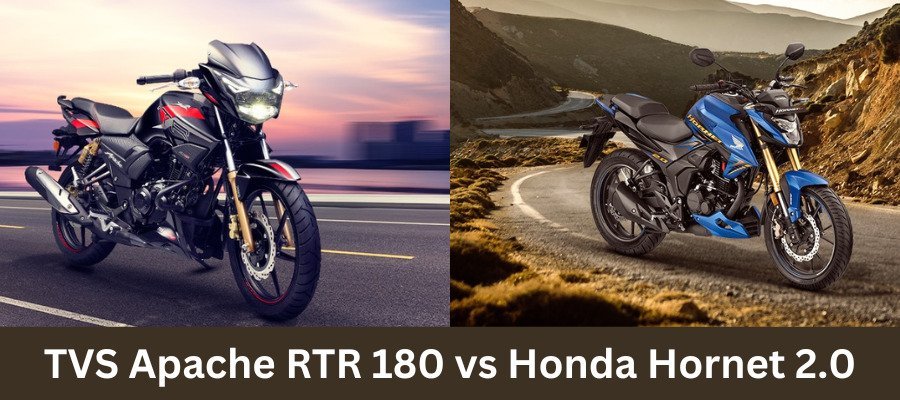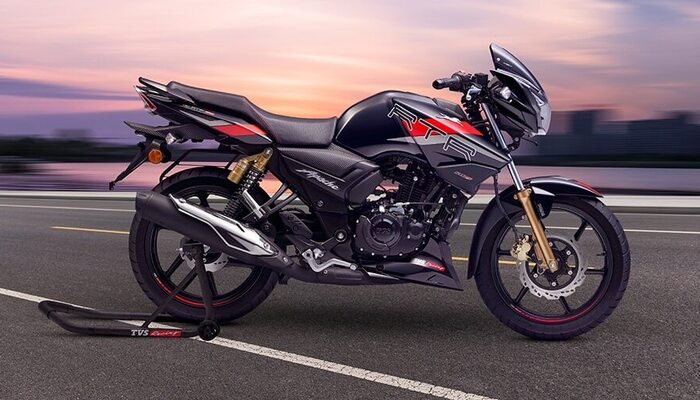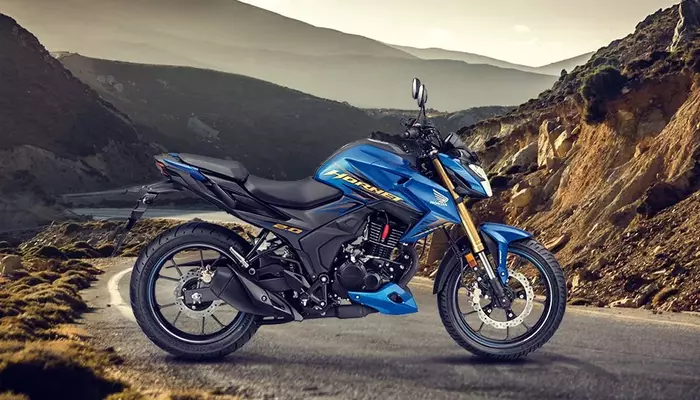
There was a time when Bajaj Auto played a gamble by introducing the Pulsar 180 in the Indian two-wheeler market. Positioned above the 150cc version, the Pulsar 180 offers an added sense of performance and power, which gave it an edge over the 150cc motorcycles. TVS was quick enough to join the party with the Apache RTR 180. It was only a matter of time before Honda also decided to introduce the Hornet 2.0 in the 180cc category.
Now that the Pulsar 180 is a thing of the past as Bajaj Auto has discontinued it, the TVS Apache RTR 180 and Honda Hornet 2.0 are the only 180cc motorcycles in the country today. Compared to the new breed of 160cc sport commuters, these two 180cc motorcycles offer additional power and quicker acceleration. Here, we have compared both the TVS Apache RTR 180 and Honda Hornet 2.0 head-on to find out which one of the two is worth going over the 160cc sport commuters.
Price

Both the TVS Apache RTR 180 and Honda Hornet 2.0 are available in a single fully-loaded variant. While the TVS Apache RTR 180 has been launched at Rs 1,30,590, the Honda Hornet 2.0 carries a hefty premium of around Rs 4,700, as it is priced at Rs 1,35,274.
| Model |
TVS Apache RTR 180 |
Honda Hornet 2.0 |
| Price |
Rs 1,30,590 |
Rs 1,35,274 |
(prices mentioned above are ex-showroom, India)
ALSO READ: Royal Enfield Hunter 350 vs TVS Ronin
Engine and Chassis

The TVS Apache RTR 180 and Honda Hornet 2.0 are the only two motorcycles now present in the elusive 180cc category. Both the motorcycles have four-stroke, single-cylinder, oil-cooled engines, with the 184.4cc engine of the Hornet 2.0 being slightly bigger than the 177.4cc engine of the Apache RTR 180. The Hornet 2.0 here gains the displacement advantage, as it produces marginally higher power and torque outputs. While the Hornet 2.0 claims 17.3 PS of power and 16.1 Nm of torque, the Apache RTR 180 promises 17.02 PS of power and 15.5 Nm of torque. Both the motorcycles have 5-speed transmissions mated to their engines.
Apart from the engine, the Honda Hornet 2.0 has a significant advantage over the TVS Apache RTR 180, when it comes to chassis. The upside-down hydraulic telescopic forks and mono-shock in the Hornet 2.0 are more modern compared to the conventional telescopic forks and gas-charged coil springs in the Apache RTR 180. Also, the Hornet rides on wider 110/70-17 front and 140/70-17 rear tyres, compared to the 90/90-17 front and 120/70-17 tyres in the Apache RTR 180. Even the 276mm front and 220mm rear disc brakes in the Hornet 2.0 are bigger than the 270mm front and 200mm rear disc brakes in the Apache RTR 180.
| Specifications |
TVS Apache RTR 180 |
Honda Hornet 2.0 |
| Engine |
Four-stroke, single-cylinder, oil-cooled, 177.4cc |
Four-stroke, single-cylinder, oil-cooled, 184.4cc |
| Power |
17.02 PS @ 9,000 rpm |
17.3 PS @ 8,500 rpm |
| Torque |
15.5 Nm @ 7,000 rpm |
16.1 Nm @ 6,000 rpm |
| Transmission |
5-speed |
5-speed |
| Front suspension |
Telescopic forks |
Upside-down telescopic forks |
| Rear suspension |
Gas-charged hydraulic coil springs |
Mono-shock |
| Front tyre |
90/90-17 |
110/70-17 |
| Rear tyre |
120/70-17 |
140/70-17 |
| Front brake |
270mm petal disc |
276mm petal disc |
| Rear brake |
200mm petal disc |
220mm petal disc |
| ABS |
Single-channel ABS |
Single-channel disc |
ALSO READ: 2022 Harley Davidson Nightster vs Indian Scout
Dimension

When you compare both the motorcycles, the TVS Apache RTR 180 is the longer motorcycle, though the wheelbase of the Hornet 2.0 is longer. The Hornet 2.0 is also the wider and slightly heavier motorcycle among the two, whereas the Apache RTR 180 is the latter motorcycle here.
| Dimensions |
TVS Apache RTR 180 |
Honda Hornet 2.0 |
| Length |
2085mm |
2047mm |
| Width |
730mm |
783mm |
| Height |
1105mm |
1064mm |
| Wheelbase |
1326mm |
1355mm |
| Kerb weight |
140 kg |
142 kg |
| Ground clearance |
180mm |
167mm |
| Seat height |
790mm |
795mm |
| Fuel tank capacity |
12 litres |
12 litres |
Design and Features

TVS has updated the Apache RTR 180 with new graphics, all-LED illumination for the headlamp, revised daytime running LEDs and new LED inserts for the tail lamps. It even gets a new fully-digital instrument console with Bluetooth connectivity. However, the design of the body panels, including the front headlamp cowl, fuel tank, side body cowls and tail section is almost a decade ago. The faux carbon fibre touches and sporty-looking clip-on handlebars instil some sportiness in the motorcycle. However, the changes have made the motorcycle feel a bit nicer than before. Though, when compared to the Honda Hornet 2.0, it feels a bit dated.
In comparison, the Honda Hornet 2.0 is the newer motorcycle here, as it was launched not much long time ago. All the body panels of the Hornet 2.0 look edgier and bigger, compared to those of the Apache RTR 180. The body decals also look flashier here in the Hornet 2.0, which highlights its sportiness quotient even more. The Hornet 2.0 also gets a fully-digital instrument console, which though has smaller fonts and misses Bluetooth connectivity. The Hornet 2.0 makes up for this absence with LED turn indicators, split seats and a golden finish for the upside-down front forks. Also, the overall fit and finish levels and build quality of the panels in the Hornet 2.0 feel slightly more premium than the Apache RTR 180.
Verdict

While the Honda Hornet 2.0 is almost Rs 4,700 more expensive than the TVS Apache RTR 180, there are a lot of things which justify this premium in price. First is the engine, which is not only marginally bigger but also offers slightly better performance.
However, the big difference appears when the mechanical hardware of both motorcycles is compared. The Hornet 2.0 comes equipped with more modern front and rear suspension components, wider front and rear tyres and bigger front and rear disc brakes. Both the motorcycles are evenly matched in terms of features – while the Apache RTR 180 exclusively gets clip-on handlebars, riding modes and Bluetooth connectivity, the Hornet 2.0 offers LED turn indicators and seats in addition. All in all, the more advanced mechanical setup and the light advantage in performance make the Honda Hornet 2.0 a winner here, thus justifying its premium over the Apache RTR 180.
ALSO READ:
You must be logged in to post a comment Login